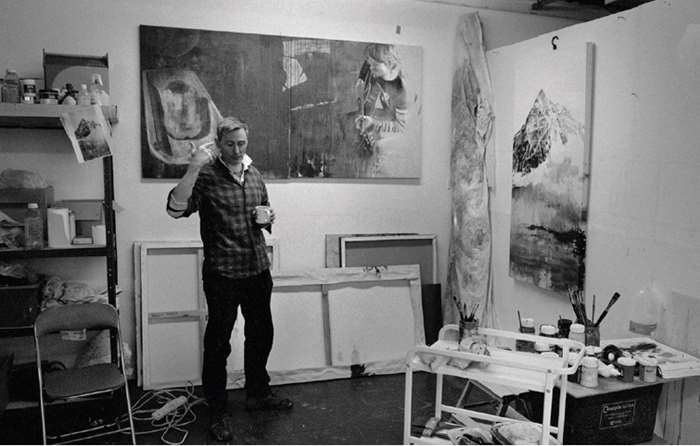The Twisted Rose and Other Lives by Andy Farr
“Wonderfully, beautifully emotive”. Those words are not how you might expect someone to describe an exhibition of paintings about post-traumatic stress disorder (PTSD).

Andy Farr at work in his studio
However, when artist Andy Farr agreed to create a series of paintings about people who are recovering from trauma, he wanted to show that not only is it possible for people to recover, but also to grow – finding new meaning and purpose in their lives.
“The Twisted Rose and other Lives” exhibition opens at the Lancaster City Museum on September 20.
Visitors will see paintings featuring dragon costumes, roses, paramedics and rock stars with guitars, each inspired by a personal account of the impact of trauma on someone’s life.
A launch event for the exhibition will take place on the 19th, from 7pm – 9pm. It will be an opportunity to meet the artist and hear him talk about the stories behind some of the paintings. There will also be a live poetry reading by Laura, one of the participants. The event will form part of the City Museum’s Heritage Open Days offer, and is open to all.
Andy’s work was initiated by the Institute of Mental Health in Nottingham. The IMH enabled Andy to contact people who had experienced trauma. Lancaster will be the final leg of a tour that has covered Nottingham, Coventry, Newcastle and London. The project was part funded by Arts Council England.
Andy says: “PTSD is much more prevalent than we realise and is often at the core of other physical and mental problems. However, with the help of therapists, friends and family, and especially their peers, people can learn to accept and give meaning to their experiences.
"My hope is that the exhibition of moving and thought-provoking depictions of what it is like to suffer and recover from mental health problems will raise awareness and consciousness of the issues surrounding trauma."
Andy is an award-winning artist with a particular interest in mental health. His previous series of paintings were based on exploring the effect of his father’s bipolar disorder on his childhood. A process which enabled him to come to terms with his own trauma and move forward.
He came late to art, becoming a full-time artist in 2010 after spending the first part of his career in marketing research and advertising. A serious illness and a damascene moment on the commute to London lead him to embark on a new direction.
You can find out more about the exhibition and Andy via his website www.andyfarr.com.
Last updated: 03 September 2019
